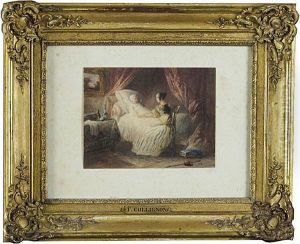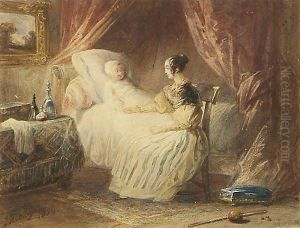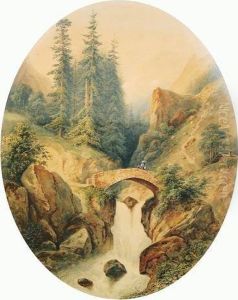Francois Jules Collignon Paintings
François Jules Collignon was a remarkable French sculptor whose contributions to art spanned much of the 19th century. Born in 1825, Collignon emerged from a period in French history that was rich in cultural and artistic evolution, a time when the arts were seen as an essential aspect of society's refinement and expression. Despite the lack of widespread recognition in contemporary art historical discourse, his work remains an important testament to the skill and creativity of sculptors of his time.
Collignon's career was deeply influenced by the Romantic movement, which was prevalent during his early years, and later by the emerging Realist movement. These influences are evident in the thematic diversity of his work, which ranges from classical and mythological subjects to more contemporary and realist themes. His ability to adapt and evolve his style is a testament to his commitment to his craft and his desire to reflect the changing tastes and philosophies of his era.
Throughout his career, Collignon received several commissions for public monuments, a common practice for sculptors of his time, which allowed them to display their work to a wider audience and contribute to the beautification and cultural enrichment of public spaces. These works often depicted allegorical figures, national heroes, or important historical events, serving both an aesthetic and didactic function. Collignon's attention to detail, his mastery over materials like bronze and marble, and his ability to convey emotion and narrative through static forms, earned him respect among his contemporaries.
Despite his achievements, Collignon's name is not as well-known today as some of his peers, a fate not uncommon for many talented artists of the past. The reasons for this relative obscurity could be manifold, ranging from the sheer volume of artists working during this prolific period in French art, to the specific tastes and priorities of later generations of art historians and collectors. Nevertheless, for those who delve into the annals of 19th-century French sculpture, François Jules Collignon offers a fascinating study of the craftsmanship, thematic richness, and evolving styles that characterized this golden age of art.
François Jules Collignon passed away in 1910, leaving behind a body of work that, while perhaps not as celebrated as some of his contemporaries, continues to offer valuable insights into the artistic movements and societal trends of his time. His sculptures, preserved in museums and public spaces, serve as a lasting legacy of a talented sculptor who dedicated his life to the pursuit of beauty and expression through form.




